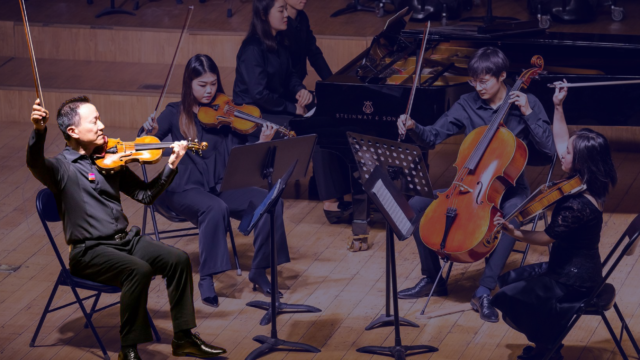EDI in Artistic Planning – Chapter 1: Why Bring an Equity Lens to Artistic Planning?
In this section:
- You are what you play.
- We have a moral imperative to surface voices unfairly silenced by racism and discrimination.
- The repertory will be enriched by discovering new voices and recovering important legacies.
- A broader audience awaits.
- Many foundations and government funders want to see change.
You are what you play.
What orchestras put on stage defines their identity. The creativity of the past will continue to inspire the audiences of the future. But a vital art form needs an evolving repertory shaped by artists who represent contemporary communities. Broadening the music and the artists we present is among the most telling and direct ways to engage with today’s diverse American culture.
“Diverse voices mean beautiful work, a vibrant future, and more connection to today’s America.”
Melissa Ngan, President and CEO, American Composers Orchestra
We have a moral imperative to surface voices unfairly silenced by racism and discrimination.
It is past time to center outstanding creators and performers from all racial, ethnic, and gender identities on our stages. In interviews with music directors and administrators at orchestras across the United States, a consensus emerges that it’s incumbent on cultural leaders to lead: to define direction and strategy and provide the means and resources for change.
“What better way for orchestras to break down barriers, and to become trend-leading?”
Mei-Ann Chen, Music Director, Chicago Sinfonietta
“If we as cultural leaders don’t know artists of color, it’s our fault, not theirs.”
Jon Lewis, Executive Director, Metropolitan Symphony Orchestra (Minneapolis)
The repertory will be enriched by discovering new voices and recovering important legacies.
Musicians and audiences risk missing out on powerful currents in American and global culture by maintaining a restrictive canon. Untold stories from both the past and the present can only enhance orchestral music as an art form and help to serve a broader community than orchestras have historically reached.
“Though we can’t erase the prejudices of the past, we can work together to build a more equitable future for classical music—one in which all voices are heard, where everyone sees themselves on our stages, and where artists like Florence [Price] do not fade into obscurity.”
Yannick Nézet-Séguin, Music Director, The Philadelphia Orchestra
A broader audience awaits.
There is also a business case for change,1 with recent research showing latent potential, both within digital audiences for orchestral music and in specific cities. For example, 2018 research by Boston’s Handel and Haydn Society2 (H+H) revealed a far larger number of people of color with interest in classical music than are currently represented in the H+H audience.
Further Reading: Using Plans and Metrics to Advance EDI
Learn more about H+H’s work and other examples of orchestras’ EDI work in practice in Catalyst Snapshots: EDI Case Studies from American Orchestras.
Programming exemplary artists with a connection to local people, places, and stories can both attract interested first timers to the orchestra and build sustained engagement. H+H’s research highlighted the importance of “more people like us on the program and on stage” in attracting first-time BIPOC audience members to its hall. And on a national level, we know that the public as a whole is increasingly looking to cultural organizations to collaborate with local artists and address local issues, with people of color in particular valuing “local venues, focusing on arts and culture reflective of my cultural identity”.3, 4
“Younger audiences want the new, the different.”
Jennifer Arnold, Director of Artistic Planning and Orchestra Operations, Richmond Symphony
“Relevance grows market share.”
David Snead, President and CEO, Handel and Haydn Society
Many foundations and government funders want to see change.
As communities are calling on arts organizations to rethink their civic roles, so too are many foundations and government agencies, both local and national. Some orchestras are seeing funds re-allocated to BIPOC-led organizations and to smaller, community-based groups that embrace EDI as part of their core missions. The question of who is performing what for whom, and who is shaping programmatic decisions, is becoming ever more crucial for contributed support.1
Footnotes:
- Making the Case for Equity, Diversity, and Inclusion in Orchestras: A Guide from the League of American Orchestras
- Conference 2022: Diversifying Audiences with Research and Relevance
- Culture and Community in a Time of Transformation, Culture Track (PDF)
- Black Voices for the Evolution and Culture & Creativity, Culture Track (PDF)
Jump to another page:
- Introduction
- Foreword from Contributing Author Kerrien Suarez
- Foreword from Contributing Author Patrick Castillo
- Chapter 1: Why Bring an Equity Lens to Artistic Planning?
- Chapter 2: Strategies to Achieve More Inclusive Programming (Part 1)
- Chapter 2: Strategies to Achieve More Inclusive Programming (Part 2)
- Chapter 3: Overcoming Challenges
- Chapter 4: Factors for Success
- Conclusion: The Path Ahead
- Footnotes, Catalyst Resources from the League, About the Lead Author, and Acknowledgements
Related
-
Learn | Executive Leadership & Management
Conference 2024: Opening Session and Gold Baton Award
-
Learn | Equity, Diversity & Inclusion
Conference 2024: Analyzing Orchestra Business Models for Strategic Decision-Making
-
Learn | Equity, Diversity & Inclusion
Conference 2024: Inspiring Change and Collective Impact through Inclusive Stages
Become a member
Thank you for your interest in the League of American Orchestras! We are dedicated to advancing the orchestral experience for all.
Join Now


